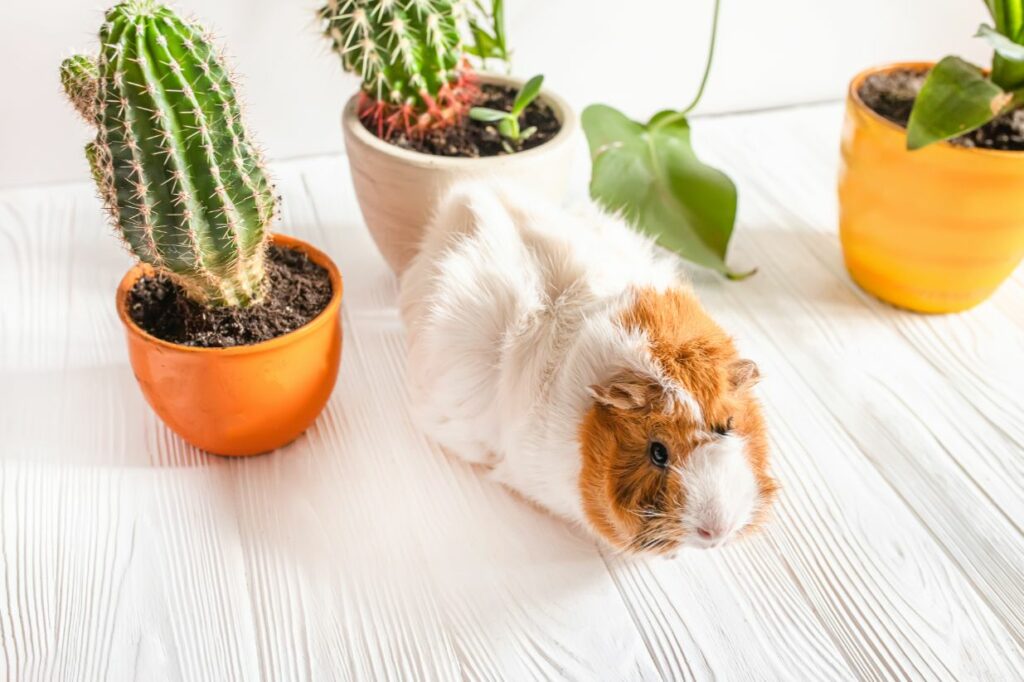Guinea pigs, also known as cavy, are small rodents that are native to the Andes Mountains in South America. These cute and cuddly creatures are known for their docile nature and make great pets for children and adults alike.
In terms of physical features, guinea pigs are unique in that they have no tail and a rounded body that is covered in fur. They come in a variety of colors, including brown, black, white, and even orange.
Domestication of guinea pigs can be traced back to the Incas of Peru, who kept them as pets and used them for religious ceremonies. They were also used for food and their fur was used for clothing. When the Spanish arrived in South America in the 16th century, they brought guinea pigs back to Europe where they became popular pets among the aristocracy.
Today, guinea pigs are still popular pets around the world. They are known for their friendly nature and their ability to form strong bonds with their owners.

The Natural Habitat of Wild Guineas
The guinea pig that we humans keep as pet is the Cavia Porcellus. This particular species does not appear in the wild. However, closely related guinea pigs that it’s likely descended from such as the Cavia Aperea and Cavia Fulgida do appear in the wild.
In the wild, guinea pigs can be found in the Andes Mountains in South America. They live in a variety of habitats, including grasslands, forests, and rocky areas. They are social animals and typically live in groups of 10-20 individuals.
Environmental factors, such as altitude and temperature, can affect their habitats. For example, in the high-altitude regions of the Andes Mountains, guinea pigs have adapted to colder temperatures and lower oxygen levels.
Surviving in the wild can be challenging for guinea pigs. They are preyed upon by a variety of animals, including birds of prey, snakes, and wild cats. To defend themselves, guinea pigs use their sharp teeth and claws to bite and scratch their predators.
Glimpse into the Lives of Wild Guinea Pigs
Wild guinea pigs are herbivores and primarily feed on grasses, leaves, and other vegetation. They have adapted to their environments by developing specialized teeth that allow them to grind tough plant material.
Socialization is an important aspect of guinea pig life. They communicate with each other through a variety of sounds, including chirps, whistles, and purrs. They also engage in grooming behaviors, such as rubbing their noses together and licking each other.
As mentioned before, guinea pigs have a number of natural predators. In addition to using their teeth and claws to defend themselves, they also rely on their speed and agility to evade predators.
The Role of Guinea Pigs in the Ecosystem
Guinea pigs play an important role in their ecosystems. They are herbivores and help to control plant growth by eating vegetation. This can help to prevent overgrazing and maintain a healthy balance of plant life.
In addition, guinea pigs are an important food source for many predators in their habitats. They are an integral part of the food chain and contribute to the overall health of their ecosystems.
That being said, there are also some negative impacts of guinea pigs on their ecosystems. In areas where they have been introduced as a non-native species, they can compete with native wildlife for resources and may even become invasive.
Conservation Efforts for Wild Guinea Pigs
The current status of wild guinea pig populations varies depending on the species and location. Some species are considered threatened or endangered due to habitat loss and other factors.
Conservation efforts are being done to protect the habitats of wild guinea pigs. This includes creating protected areas and implementing sustainable land use practices. In addition, efforts are being made to reduce the impact of invasive species on guinea pig habitats.
As individuals, we can contribute to the protection of wild guinea pigs by supporting conservation organizations and being mindful of our own impact on the environment. We can also spread awareness about the importance of protecting these cute and cuddly creatures and their habitats.
Conclusion
In conclusion, guinea pigs are fascinating creatures that have a rich history and play an important role in their ecosystems. By learning more about them and supporting conservation efforts, we can help to ensure that these adorable animals continue to thrive in the wild.
- How Long Do American Eskimo Dogs Live? Important Factors and Care Tips - September 29, 2023
- Do American Bulldogs Need Grooming? Essential Tips and Care Guidelines - September 29, 2023
- Do Bengal Cats Enjoy Playing? Essential Tips for Keeping Them Active - September 29, 2023